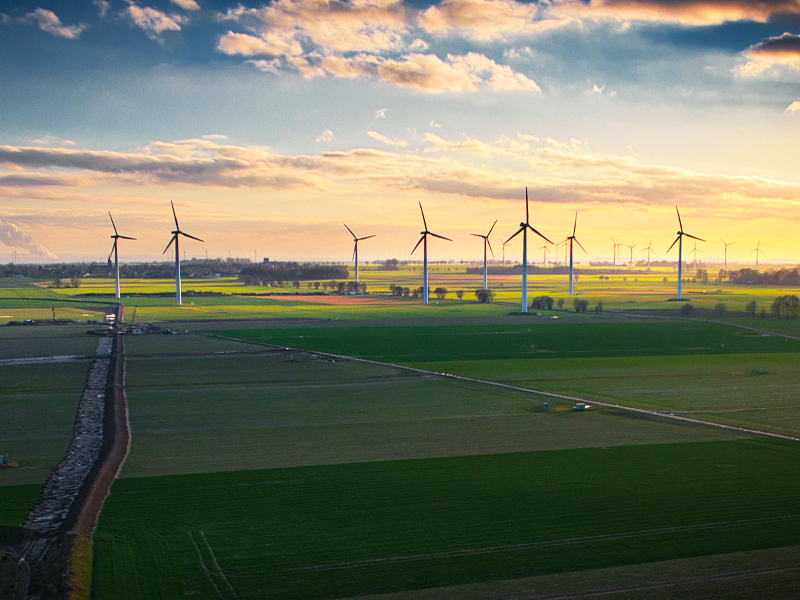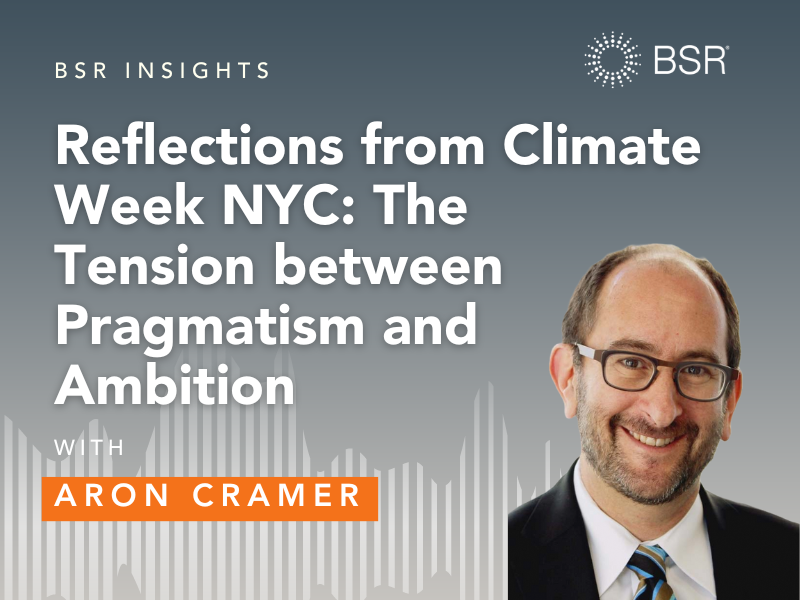
Photo by saravut vanset on iStock
Authors
-
Deb Gallagher
Former Director, Climate Change, BSR
-
Anson Knausenberger
Former Associate, Energy, Extractives, Transport, and Industrials, BSR
Key Points
- Workers and frontline communities face the greatest risk from the transition to a net-zero economy and ongoing climate change impacts.
- Transformative Climate Transition Plans (CTPs) describe critical private sector actions deployed to reach net zero, address worker displacement, and build frontline community resilience.
- Key components of a Climate Transition Plan focused on supporting a just transition include social dialogue with workers, co-creation of solutions with frontline communities, deployment of resources to address dislocations and build resilience, and responsible engagement in public policy.
Climate transition action plans lay out the measures a business will take to reach net zero ambitions and facilitate their transition to a more sustainable and net-zero future. In addition, they should include climate objectives and goals and how they will be achieved, and outline protocols for governance and accountability, business and financial planning, implementation, organizational culture alignment, and engagement with stakeholders, value chains, industry, and policy. Transformative plans build resilient business strategies.
The Impact of a Net-Zero Transition on Workers
The transition to a net-zero economy and the ongoing impacts of climate change pose risks to workers and communities. As industries undergo the transformation necessary to reduce greenhouse gas emissions to achieve a net-zero future, workers face economic uncertainties and job displacements. As businesses switch to renewable energy and redesign products and services, workers will find their skills unaligned. For example, the IEA estimates that 5 million mostly well-paying jobs in the extractives sector will be lost by 2030, which will lead to near term shocks to communities and long-term structural impacts.
A transition to a net-zero future has the potential to harm local economies as company supply chains are moved to support low-carbon products and services. Local economies built around supporting the manufacture of high-carbon products, traditional industrial agriculture, and extractives operations face the potential for significant economic downturns.
Also, communities at the frontline of climate change will remain vulnerable to climate impacts such as extreme weather events. They will face challenges to recover and become resilient due to limited access to resources such as financing, insurance, healthcare, and clean energy.
How CTPs Can Address Worker Displacement and Build Resilience
Climate transition plans should describe measures to ensure a just and equitable transition from fossil fuels to renewables and help build community resilience to climate change along companies’ value chains to ensure that workers and frontline communities are not left behind in the path to a net-zero economy.
By incorporating just transition considerations, companies can enhance worker and community resilience, and minimize material risks across the value chain. A just transition is not only an ethical imperative but also a strategic business approach that can lead to long-term success, resilience, and shared prosperity.
Key Components of Climate Transition Plans That Support a Just Transition
1. Social Dialogue with Workers
Workers facing disruptions are adept at describing the challenges they face and what expectations they have from employers. The creation of a forum for social dialogue with workers will build respect and mutual understanding, which can lead to better long-term solutions. Climate transition plans should describe tools businesses are deploying to facilitate social dialogue with employees.
For example, Mercedes Benz created a “people plan” as part of its CTP, which has become an integral part of its sustainable business strategy. The plan describes how the company will invest in good working conditions, and provide continuing education for its employees. The people plan describes how internal conversations will be held with all departments to identify and pick up on new trends, share experiences and create secure jobs.
2. Co-creation of Solutions with Frontline Communities
Frontline communities understand the issues faced by cities and towns on the frontlines of climate change. They also understand what solutions are needed to minimize impacts and build resilience. Companies should engage in a collaborative process with communities to co-create solutions and take collective action. Climate transition plans should describe the strategies businesses are taking to co-create solutions with these communities.
For example, Microsoft is exploring models that link their carbon-free energy commitments with community-led clean energy projects, aiming to equitably distribute the benefits of the clean energy economy. Microsoft is partnering with organizations like Volt Energy Utility to establish new models, such as "equity PPAs," that not only bring renewable energy online but also create opportunities for frontline communities.
3. Deployment of Resources to Address Dislocations and Build Resilience
Beyond social dialogue and co-creation, business support of a just transition will require the expenditure of financial and capital resources. Climate transition plans should describe how resources will be deployed to support worker reskilling and retraining and to implement local solutions which promote community resilience.
4. Responsible Engagement in Public Policy to Support a Just Transition
Businesses cannot address these systemic problems alone. Global, national and sub-national policies are necessary scaffolds to motivate all parties to incorporate justice into required greenhouse gas emission reductions. BSR will describe how responsible policy engagement should be incorporated into climate transformation plans in an upcoming blog.
Climate transition plans must prioritize a just transition to ensure that workers and frontline communities are not left behind in the path to a net-zero economy. Incorporating a just transition perspective into climate transition plans is vital for ensuring an equitable and sustainable future.
By embracing shared prosperity, social protection, consultation, and collaboration, businesses can drive positive change while minimizing the negative effects of the transition. The development of an ambitious CTP which transparently declares the practical implementation strategies companies will take to address climate injustice and minimize worker displacement further supports their commitment to a just transition.
Topics
Let’s talk about how BSR can help you to transform your business and achieve your sustainability goals.







